How Students Learn to Be Generous Listeners
By Laurie Miller Hornik

In Marilyn Nelson’s poem “Generous Listening” she describes how A conversation can be a contest, / or a game of catch with invisible balloons. She uses words like “miracle” and “amazingness” to describe conversations and ends with the question: how can I not listen generously?
When I first read this poem, I knew this is what I wanted for my seventh grade students. My students already had some solid discussion skills: they knew how to quote from a text; and they knew how to connect their comment to what the person before them had said using phrases like “I agree [or disagree] with ____” or “Building on what _____ said.”
But there was a quality to the discussions that resembled a series of loosely connected statements more than a genuine conversation. I wasn’t sure they were really listening to each other or that they saw listening as an important factor in discussion.
Moreover, when students set goals for themselves, I noticed they often aspired to speak more during class – often writing “My goal is to speak at least once [or twice] per class.” Sometimes, these students would indeed speak up during class and then, right after their comment, they would seem to take a break: either leaving to visit the bathroom or staring out the window. It was obvious to me that speaking without listening was only half of what participation involved. But it wasn’t obvious to my students.
I needed a new approach to teaching discussion – one that valued listening as much as speaking and communicated this clearly to students. Part of the challenge is that listening is harder to measure. Students – and I – knew how to count how many times a student spoke. I could even evaluate the quality of a comment they made. But how would I assess good listening?
I considered having students take more notes during our discussions – notes that I could collect and assess. But notetaking is yet another challenging activity for seventh graders, and I didn’t want to turn listening into a vehicle for notetaking, which would ultimately take the focus off of the actual listening.
Fishbowl & Small Group Discussions
I already had a regular practice of running fishbowl discussions: 8 to 10 students would sit in the middle of the room for a discussion while the rest of the class took notes on “conversation content” (the ideas of the discussion) and “conversation moves” (the techniques students use, such as asking questions or building on what someone else says). My colleague, Dr. Brad Fraver, and I decided to use these fishbowls more intentionally to teach listening.
We began using the fishbowls to teach specific skills that would lead to better genuine listening. Before the students began their student-run discussion, we instructed them to go around the circle twice, just asking questions. It would be tempting to answer the questions, but they should just listen to them.
Students found this challenging and sometimes frustrating, but it also had a game-like quality that students enjoyed. And once the questions were – to use Marilyn Nelson’s language – ”floating like cloud medicine balls,” the discussion was that much deeper. Students, used to listening to respond, were now practicing listening to understand.
Text Rendering
Another effective pre-discussion activity we used involves text rendering: Students go around the circle one, two, or even three times sharing short chunks of text, without any other explanation. Depending on the topic, this can be open-ended or more focused. Text rendering keeps the text central to the discussion and it gives students a genuine experience in listening to each other.
Here are some examples of prompts for text rendering, from very general ones to more specific ones:
- Choose a chunk from the text you find interesting.
- Choose a chunk from the text that seems important to the author.
- Choose a chunk from the text that seems important to the main character.
- In this news article, choose a detail that struck you as especially interesting or important.
- In this science article, choose a fact or piece of evidence you’d like us to keep in mind as we discuss the article.
- In the second half of Sandra Cisneros’s The House on Mango Street, choose a chunk of text that shows how Esperanza has changed.
- In Chapter 9 of William Golding’s Lord of the Flies, choose a chunk of text that shows the ominous mood on the island.
Text rendering and asking students to share a round of questions are great strategies to begin any size group discussion. In a large group, like a whole class, it is a low-stakes way to ensure everyone’s voice is in the room. Just as important, it teaches genuine listening: Students listen eagerly to hear what parts their classmates have chosen. The discussion can then begin with the patterns they noticed – with students commenting on what parts – or questions – came up several times or just once.
Small Group Discussions
Text Rendering – or a pre-discussion round of questions – is also helpful in running simultaneous small group discussions. Sometimes I split my class into several small groups of about four and put some discussion questions on the board. These discussions seem even more effective when I begin with a text rendering or question-only protocol. Instead of going around the group, I sometimes set a two-minute timer and ask that each group spend the full two minutes only asking questions or only reading chunks of text. Then, after the two minutes, I put the discussion questions on the board, and the groups all move simultaneously into their discussions.
Engagement vs. Participation
As part of our move toward teaching generous listening, we also stopped talking about participation, instead calling it engagement. Even though we had always considered listening to be a crucial part of participation, our students saw participation more concretely as raising your hand a lot. Once listening was included, the word engagement made more sense to them.
What’s “Generous” about Generous Listening?
When we read Nelson’s poem, we talked about what generosity means. Some students were not sure how it was different from kindness. Others associated it only with giving physical items, like gifts, to others. Nelson’s poem helped us think about generosity in more nuanced ways:
We talked about the kinds of conversations or discussions students have with their friends and their families and how to bring the positive qualities from these into class discussions. We talked about what it feels like and looks like to listen because you really want to understand. We talked about listening itself as an act of generosity – a gift of attention you can give to someone else.
Write to Remember
In lieu of taking notes during all of our discussions, we began a practice of asking students to “write to remember” at the end of a discussion. This was another way of honoring the importance of listening. It was only through listening carefully that students could then capture interesting thoughts that were not just their own and write them down for the future.
In one unit, we used these “Write to Remember” notes as the basis for essays students wrote about poems they had heard discussed in Fishbowl Discussions. These essays had a different quality from the student essays we had read before: students’ ideas were fresher and there was a heightened sense of urgency and enthusiasm in putting them forth because they had come from this process of generous listening.
Generous Listening Across Disciplines
While I teach generous listening in English class, any class that includes discussion can teach generous listening. If students are not currently used to listening to each other in your class – or if you think they could do so more fully – here are some steps that might help:
- Set up the desks in a circle instead of facing front so that students are focused on each other.
- Point out what your students do well already: perhaps raising their hands and sharing their ideas with the teacher, one at a time.
- Ask them about the other times in their life they engage in discussion and how those discussions are different from class discussions.
- Model discussions with small groups or fishbowls.
Conclusion
In her poem, Nelson writes, Who is this miracle speaking to me? / And who is this miracle listening? It may be too much to expect middle schoolers to see themselves and their classmates as miracles, but they can learn to see themselves and each other as people with the capacity to teach each other and learn from each other. They can learn to listen with generosity and feel the warmth of being listened to with generosity. What an important step this could be in making the world a better place for everyone.
I’d like to acknowledge my colleague Dr. Brad Fraver, who co-created many of these techniques with me. His thoughtful academic work on listening was a great asset to this work. See his article “The Teacher as Listener: A Theory of Pedagogical Listening in the Literature Classroom.”
Laurie Miller Hornik is a K-8 educator with over 30 years of experience. Currently, she teaches seventh grade English at the Ethical Culture Fieldston School in NYC. Laurie is the author of two middle-grade humorous novels, The Secrets of Ms. Snickle’s Class (Clarion, 2001) and Zoo School (Clarion, 2004). She writes a weekly Substack of humorous essays called Sometimes Silly, Sometimes Ridiculous and creates mixed media collages, which she shows and sells locally and on Etsy.

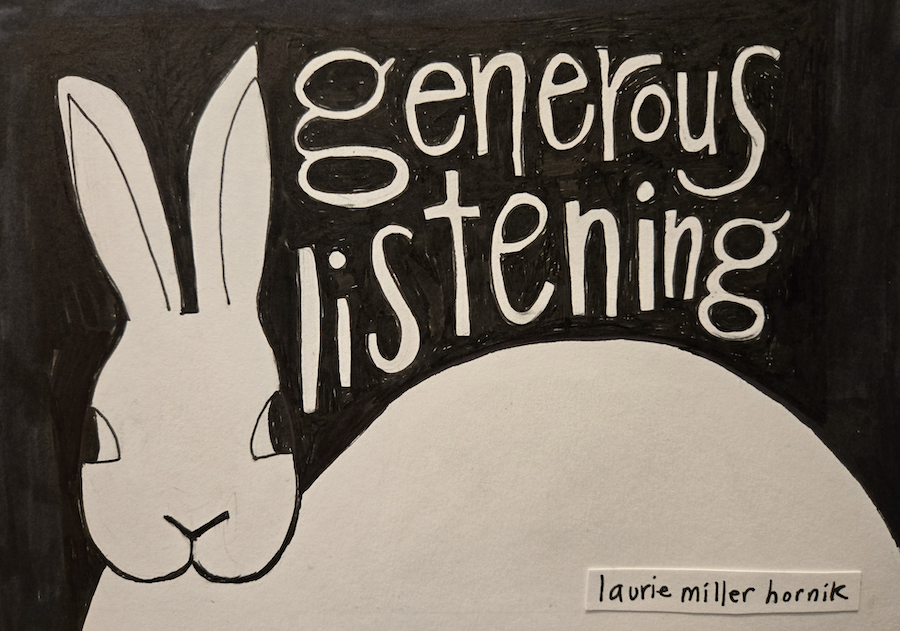
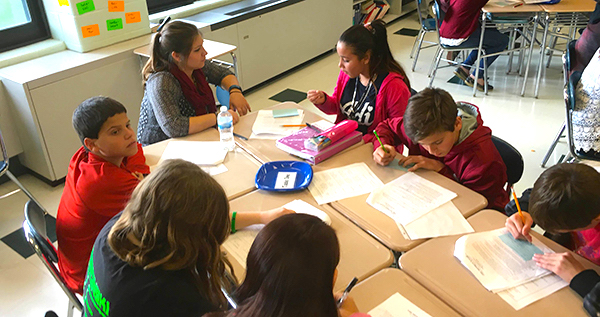
















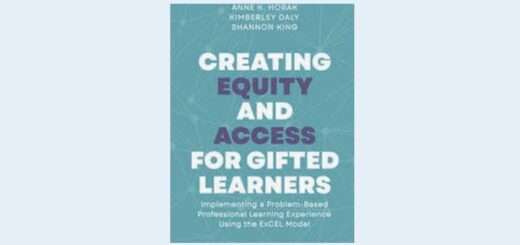


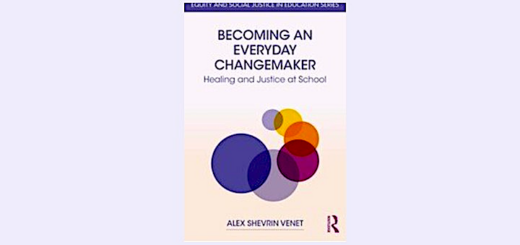

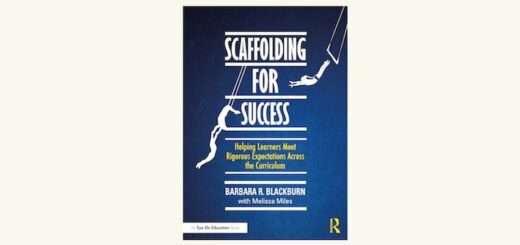



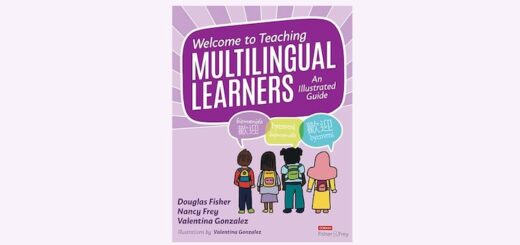
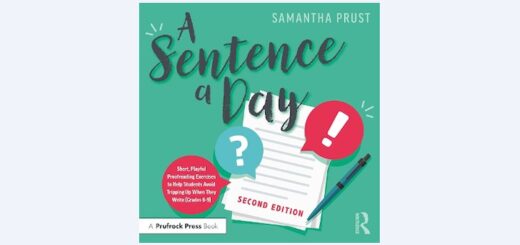
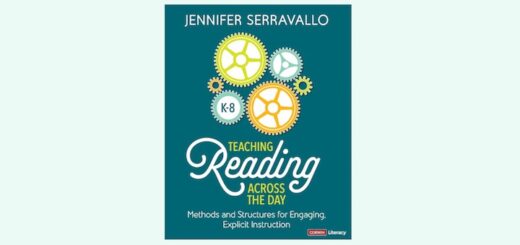
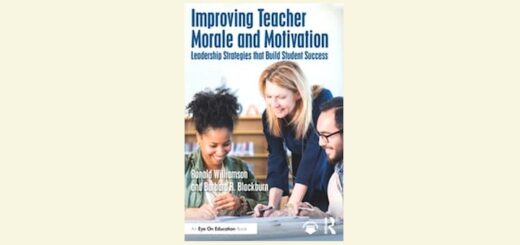




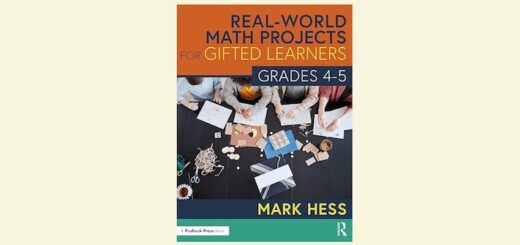
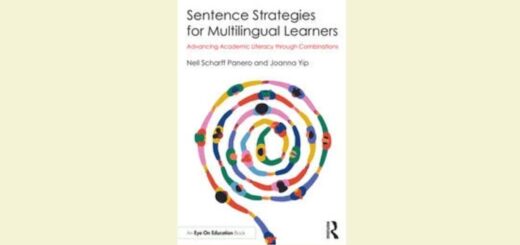
This is so beautiful and so helpful! Thank you!!!